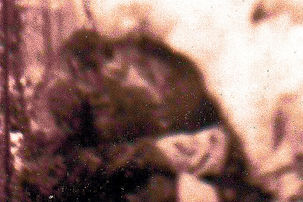
“Louisa Naomi Kent Billings” Pt. 7
Mar 11, 2022
Sometime in the 1890’s, for what ever-reason this time, epidemics behind them, maybe trying to leave tough and trying times behind, agonizing that family would be left buried but not forgotten, the Stockmans, Rebecca, Young Hardy and of course Louisa, loaded their wagons, mounted their horses, whistled for the dogs to gather their sheep and goats, and headed for the hills and canyons in and around La Luz, New Mexico, and into the canyon area known as Fresnal Canyon between La Luz and the Mining Camp of High Rolls, ideal ranging area and terrain for the critters.
The route they took on their journey to La Luz was never exactly provided, but it’s fun to speculate. Several things would have to be in place along the route, water and forage. While maybe just as important would be a pre-traveled track, that being a route already explored, connecting communities and supplies availability along the way. That route may have been Bartlett’s Route of 1850 up to the town of Johnston, or Fort Concho, where they could resupply and rest the stock and their own bodies with a little security. While there in Fort Concho, I would hope, and suspect at the same time, they hook up with other wagon trains going in the same direction that would already know what to expect along the way. And, most importantly, for protection. I’m sure there were still marauding Comanches along the way. There, they probably connected with the then famous and well established Butterfield Trail. Although there would have been no mail for them, as the Butterfield Mail had already been disconnected. This would have been the logical route as by then the Cavalry had already subdued the Apaches and the Comanches, and the trail, which was probably just a wide swath of wagon tracks and left behind debris. But staying on a well-used route meant that another outfit was always on the way in case of trouble, such as a busted wheel or a lame animal.
As I was saying busted wheel or lame animal, it occurred to me that if I thought of these how much more would Rebecca and Young Hardy have thought of these issues and many more. So, for fun and enlightenment, let’s try and guess just what paraphernalia would have been on the typical wagon of a family moving west. However, a detailed list would be much too long. The most common things would be food, dried and canned. Maybe grain for the critters. Medicine, for the people Typical Wagon Train Heading West. and the animals, especially for the mules. And liniment, since harness was notorious for causing sores and blisters, especially where the mules strained against their collars. I also suspect that they carried cooking and drinking water in wooden barrels attached to either side of the wagon. And probably an extra wheel or two, also lashed to the sides of the wagon. And, of course, cooking pots and pans and other necessities.
But, speaking of wheels. I am always amazed at the endurance of the wooden wagon wheel. When The Miracle Wagon Wheel. you consider the abuse they had to endure carrying several tons of wagon and its gear over many rough and tumble roads, God must have known that they would need blessing from above to carry the family and all of their belongings to their new home, never seen, only dreamed. About the wagon wheel, the main timbers used in a traditional wooden wheel are Elm for the nave, Oak for the spokes and Ash for the felloes (part of the outer circle of the wheel) although this can vary in some areas depending on availability of timber, climate and style of production.
The Butterfield Trail would have carried them fairly close to their destination at La Luz, New Mexico. (The Light.)
From Fort Concho, Tx. along the Butterfield Trail to the Guadalupe Pass through the southern foothills of the Guadalupe Mountains would have been a trip of about four hundred miles. Depending on whether or not you are a bird. Along the route there would have been the anxiety and anticipation of crossing the Pecos River eleven miles east of Camp Stockton. The route reached Camp Pleasant then crossed the plain twenty three miles to Horsehead Crossing where a ferry carried the coaches across the Pecos River to Horsehead Crossing Station. The source of the name "Horsehead" has been attributed to horse skulls said to have marked the banks. This may have been due to the Comanches who marked the crossing for easier identification, or the abundance of animals that died at the crossing from drowning, quicksand or from hyper hydration while being pushed too hard along the trail returning from Mexico.
My guess is that they did not cross at Horsehead Crossing but turned north along the east side of the Pecos River and then crossing at Pope’s Crossing, which by then was the most used route. Then on about forty or fifty miles to Guadalupe Pass and then to the valley below and north a few miles to La Luz just north of present day Alamogordo. How and where they decided to make their home I don’t know, but we do know by the record that their choice location would have been somewhere in Fresnal Canyon.
Louisa was about sixty-eight when she arrived with the Stockmans at La Luz and the Fresnal Canyon. There they either camped or found housing, I couldn't tell you, but they were in the ideal location for raising Sheep and Goats, and accordingly, their assets flourished and I’m sure the family was hoping it was home for good.
“And That’s My Opinion.”
